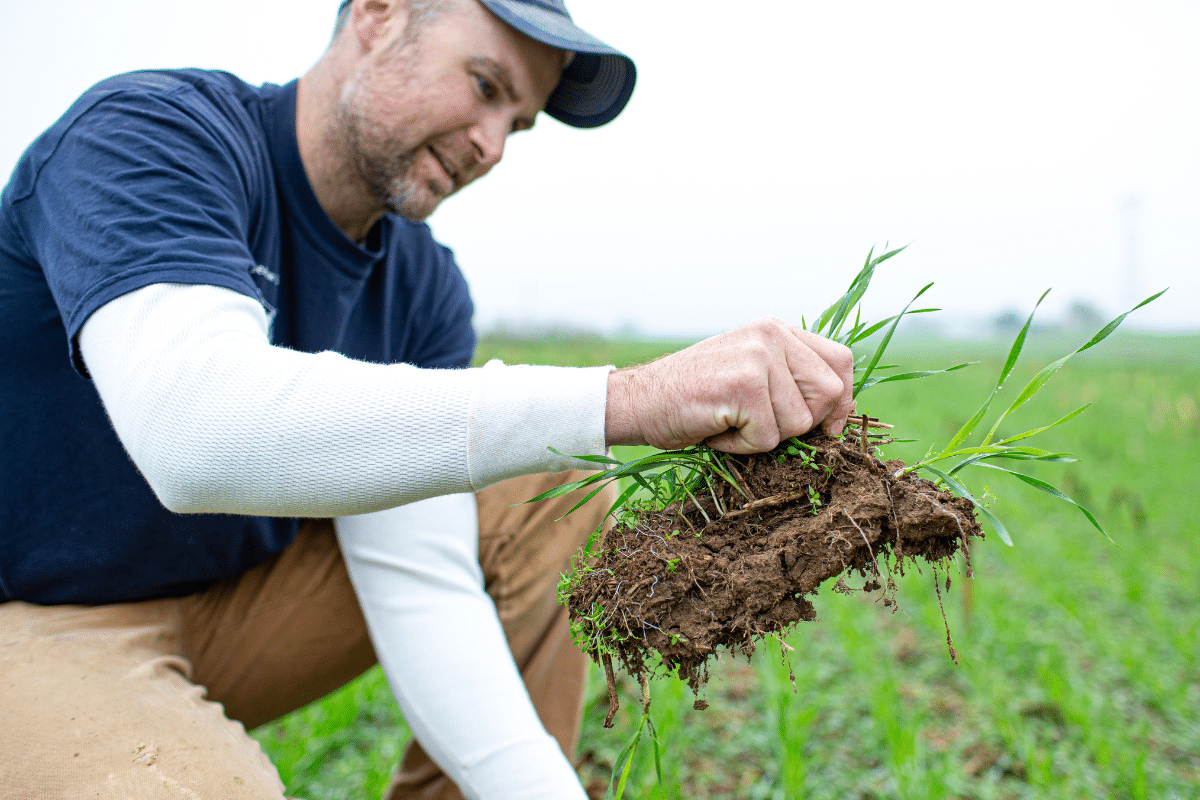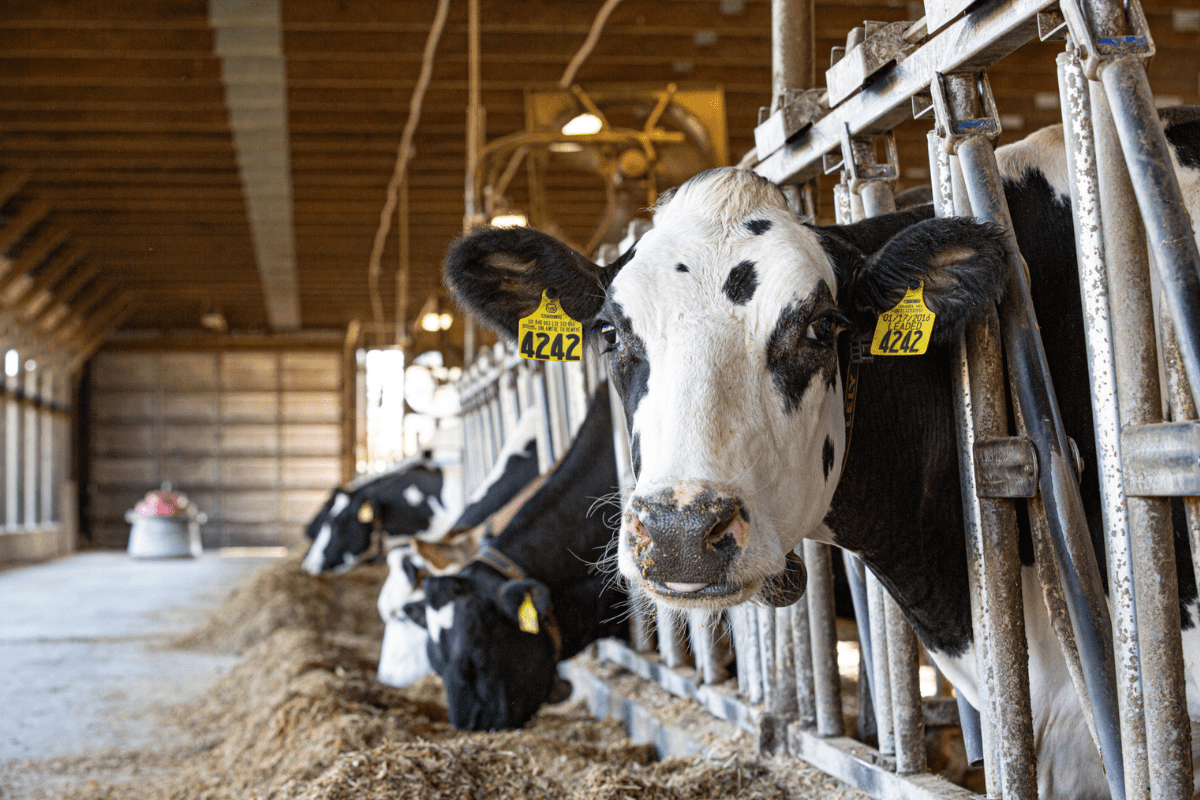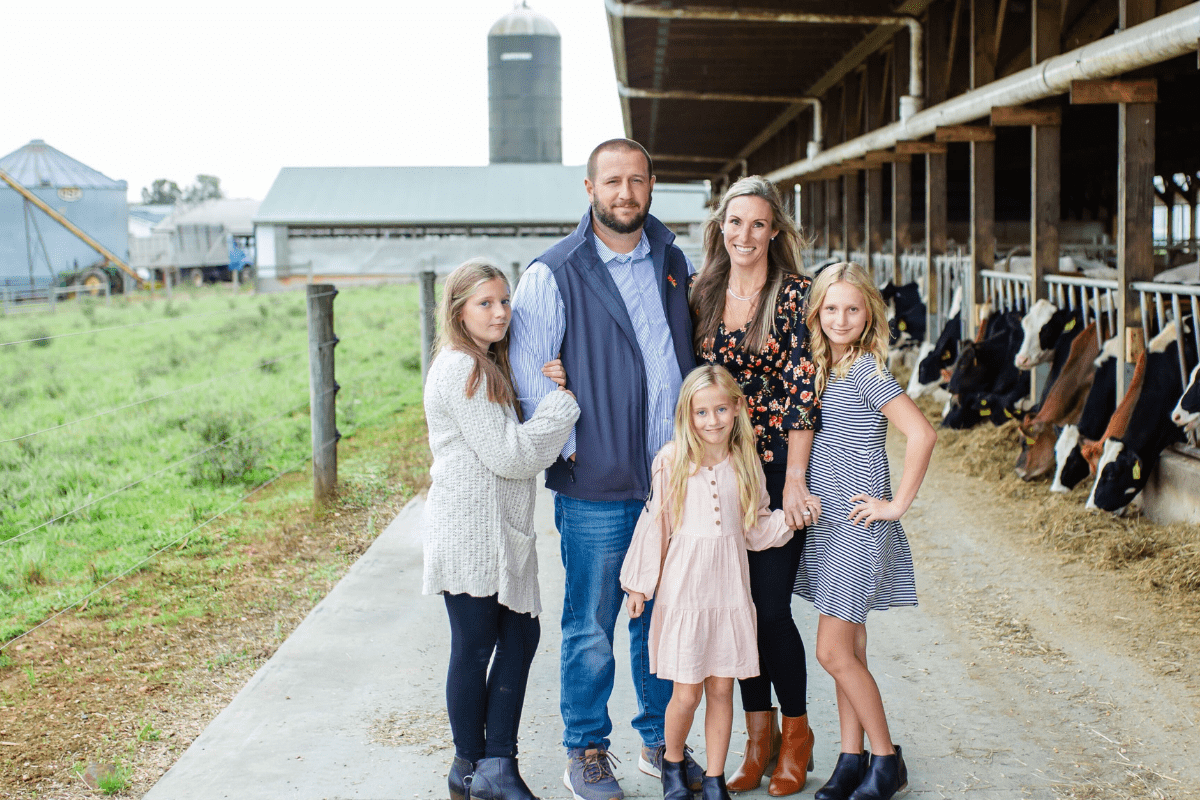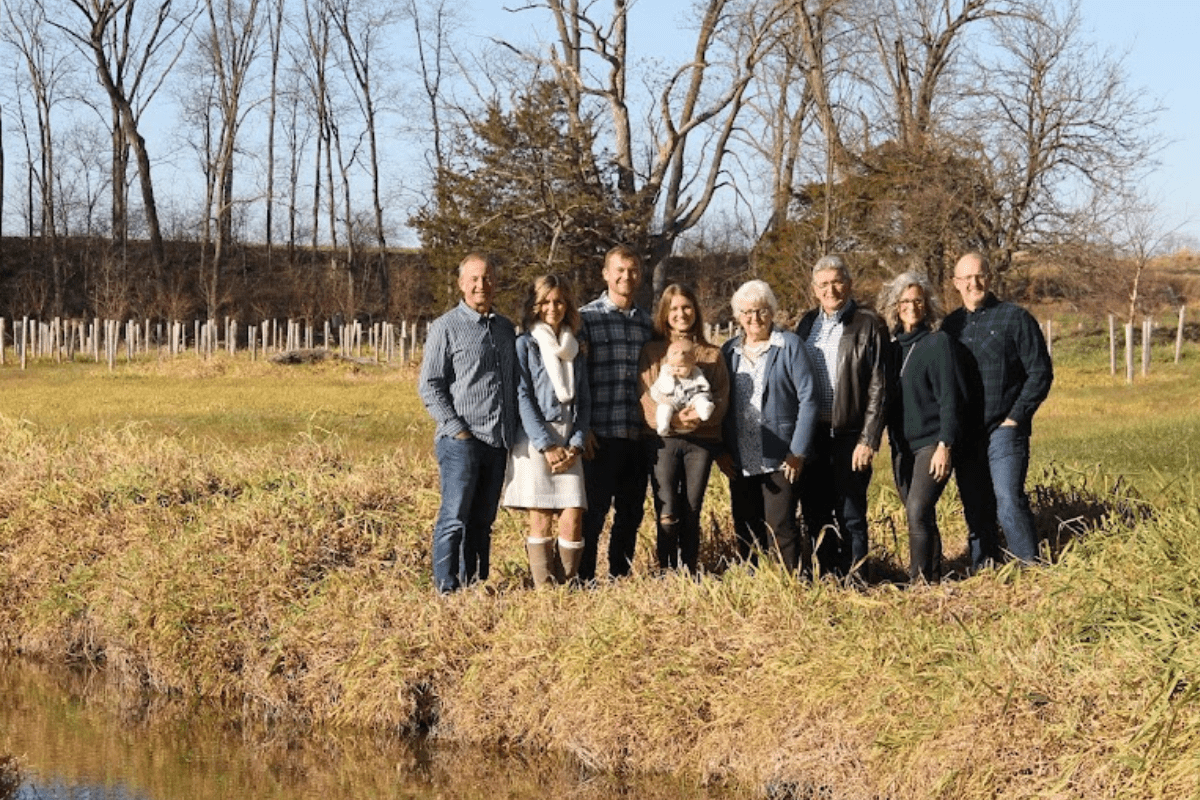On his family’s century-old dairy farm, located in Elverson, Pa., at about the easternmost part of the Chesapeake Bay watershed, dairy farmer Jared Kurtz helped plant trees along a creek that runs through Kurtland Farms.
“The creek that runs out of our farm eventually leads into the Conestoga River, which flows into the Susquehanna River and ends up in the Chesapeake Bay,” says the fourth-generation dairy farmer. “So our goal is to keep the water as clean as possible here and we really view the trees an opportunity to accomplish that goal.”
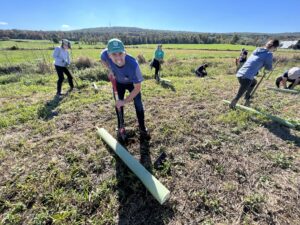
Jared Kurtz prepares a hole for planting a sapling on Kurtland Farms, which is owned and operated by members of the Kurtz family of Elverson.
As part of their ongoing focus on sustainable farming, Kurtland Farms teamed up with the Alliance for the Chesapeake Bay to plant the trees. “Planting trees is the best thing we could do to protect our streams,” says Ryan Davis, the Alliance for the Chesapeake Bay’s Senior Forests Project Manager. “It brings a living ecosystem back to the stream, which helps keep the water clean and slow streambank erosion and provides a habitat for wildlife and pollinators.”
These forestation projects are called riparian buffers, and protect streams from storm water runoff, reduce soil erosion and reduce greenhouse gases. Trees and other plantings help filter the water as it makes its way downstream to the Chesapeake Bay.
On an autumn day in mid-October, Kurtz, assisted by Alliance staff and volunteers, planted 326 saplings of a variety of species along a headwater creek of the Conestoga River on Kurtland Farms.
“Working with dairy farmers is great. They know their land, they’re here every single day, and so they know what the problems are and know the potential solutions,” says Davis. “Our job is to help bring resources to them to fix things that need to be fixed and to improve their properties for the current operation and for future generations.”
The Alliance for the Chesapeake Bay and its partners funded this project through different grants. The long-standing partnership between the Alliance, American Dairy Association North East and Pennsylvania Dairy Promotion Program facilitates opportunities for dairy farmers to protect the environment in different ways, such as planting trees along streams and rivers on their farms.
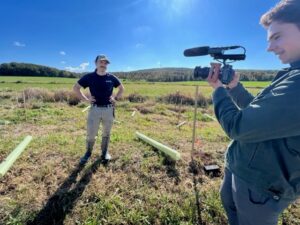
Alliance for the Chesapeake Bay’s Eric Braker prepares to document the day’s tree planting activities at Kurtland Farms by interviewing the Alliance’s Senior Forests Project Manager Ryan Davis.
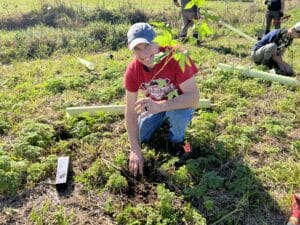
Tim Kurtz, Jared’s dad, plants trees along a creek on the family’s century-old dairy farm.
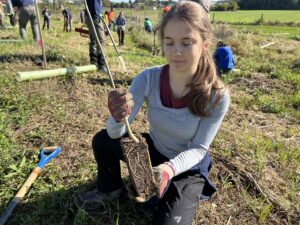
A volunteer holds one of 326 saplings that were planted on October 18, 2023.
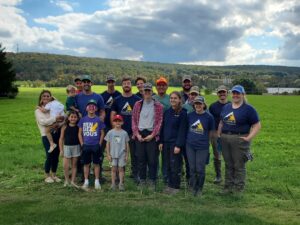
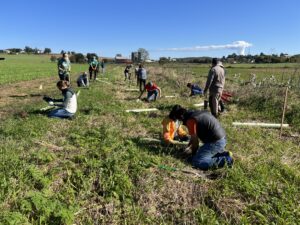
The Kurtz family, Alliance staff and volunteers at the tree-planting event.
Dairy farmers play an important role in sustainable food production. Planting trees is just one example of the sustainability practices that dairy farmers are utilizing to protect the environment. This work is helping dairy farmers achieve a shared U.S. dairy commitment of greenhouse gas neutrality – or better – by 2050.
“By working with conservation groups like the Alliance for the Chesapeake Bay, the Kurtz family is farming with their eyes on the future, ever mindful of taking the best care of the environment as they produce nutritious food for the community,” says Lolly Lesher, chair of the Pennsylvania Dairy Promotion Program.
In 2023, the Alliance for the Chesapeake Bay will plant more than 45,000 trees across Pennsylvania. More than 14,000 of those trees will be planted on dairy farms.
To volunteer and help plant trees, visit Alliance of the Chesapeake Bay for upcoming opportunities.

